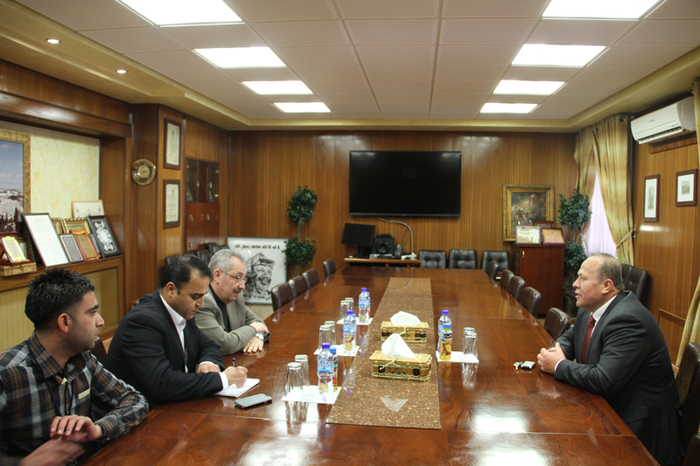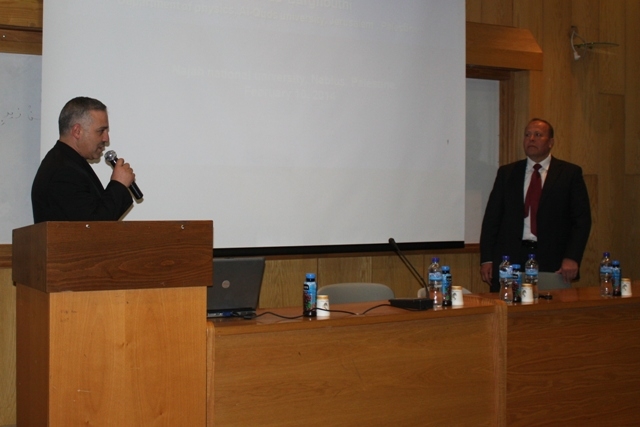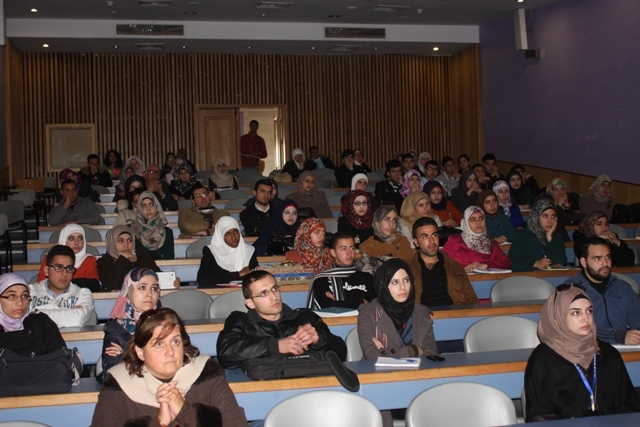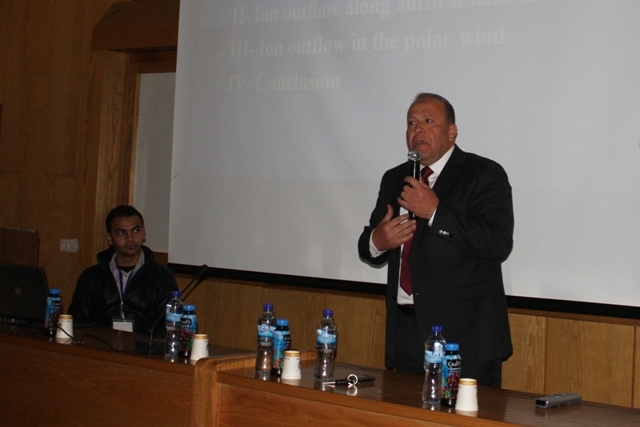Space Physicist, Professor Emad Barghouthi, visits An-Najah
On Monday 10 February space physicist Professor Emad Barghouthi gave a lecture to staff and students entitled: “Science, Physics and the Barghouthi model”. Following the lecture Professor Maher Natsheh, the Acting President of An-Najah, Mr. Khaled Mufleh, the Acting Director of Public Relations and Mr. Mohammad Morshed, PR event coordinator met with space physicist Professor Emad Barghouthi, at the new campus library.

Dr. Eyad Saad Al-Dein, Head of the Physics Department welcomed Prof. Barghouthi who went on to talk about “the Barghouthi model”. Prof. Barghouthi explained that the model was a computer model which he has designed for the purpose of getting to know the features of earth’s outer space, looking into how oxygen Ions rise from earth to space. He spoke about how this ground-breaking model allowed scientists to best explain the behaviour of oxygen and hydrogen ions in space (2000 to 100000 kilometres). He went on to talk about the characteristics of outer space, and the work now being done around investing in space exploration and habitation.

Following the seminar, Prof. Natsheh welcomed Prof. Barghouthi to An-Najah, and expressed his pride at the scientific and academic excellence of Palestinian scientists turned out by universities, saying that:
“All Palestinian universities complement each other’s role in achieving and highlighting Palestinian excellence in the academic and scientific fields internationally, and we must continue to do so”.

Prof. Barghouthi also thanked An-Najah for the invitation and the universities continued investment in high quality education despite the constraints, adding:
“Resources should not limit progress and development, something I was able to represent through development of my computer model”.

Notes:
- Professor Barghouthi is from the village of Beit Reema near Ramallah, and received a PhD in Space Physics from the University of Utah in the United States in 1994.
- “The Barghouthi Model” and other international models were compared to the results found by space shuttles, and Barghouthi’s was found to be the most accurate.



